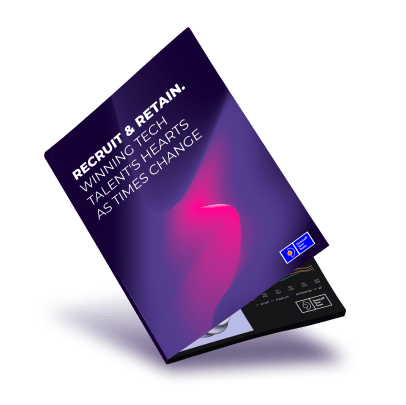Globalization is about cultural exchange and something that you can monetize. 60% of companies in the world struggle with attracting the right talent locally, due to the Global Employment Policy Review 2023.
At the same time, while high-income countries experience tight labor markets, low- and lower-middle-income countries still encounter higher unemployment rates compared to the pre-COVID-19 times. The idea of hiring an international employee lies on the surface.
Do you represent a forward-thinking tech company? If so, hiring foreign-based employees can be a game-changer for you, bringing fresh perspectives, diverse skill sets, and a global outlook. Now, we will guide you on how to get only positive experiences when hiring overseas.
The Whys of Hiring Employees Overseas
Did you hear of the advantages of extended hiring geography?

A melting pot of ideas. Contrast backgrounds bring creativity into problem-solving, leading to better products and services.
Access to specialized skills and cost-effective solutions. By hiring prospective foreign workers, you can tap into the expertise that might be rare or unavailable locally. Gartner informs that IT executives name talent shortage as the main reason for postponing the business transforming technologies implementation in 64% of cases. For comparison, it was only 4% in 2020.
Why fix your viewfinder in one spot when hunting for tech talent? Some countries offer skilled tech specialists at affordable costs without compromising on talent. Among them are Poland and Israel, with their first-class education and support for startups. Portugal and Greece are known for creating attractive conditions to welcome IT professionals. As for the roles which you may fill with candidates from abroad, be sure there are little to no restrictions, even if you are in search of ML developers or Data Scientists who are sought-after positions these days.
A way to expand your business. With a team spanning different time zones, you can extend your operational hours, providing round-the-clock support and enhanced productivity. With people fluent in the languages of your international customers, you enhance customer satisfaction, boosting your brand reputation.
These worthy points at stake stimulate companies to elaborate on how to hire someone from another country, avoiding challenges. We’ve conducted research and are ready to share the answers with you.
The Concerns of Hiring Foreign Nationals
Here are some major risks you may face when deciding to hire foreign workers. Frankly, those were risks only for the pioneers of international hiring, who have already “debugged” the mechanisms. Nowadays, each of the described concerns has a simple and elegant solution.

Legal and Regulatory Compliance
While globalization eliminates differences in people’s lifestyles, education, and business ethic, we have no totally unified regulations yet. Different countries have unique labor laws, work permit requirements, and immigration regulations. Non-compliance is fraught with fines or even the expulsion of the employee from the country.
Regardless would it be a remote or office-based mode, when you decide to hire internationally, it could be time-consuming to interpret the 1000 and 1 laws and regulations for each target region.
Some examples are:
“Ban the box laws”, forbidding to ask candidates about their criminal history;
Pay disclosure laws, making the investigation about the previous salaries of your potential hires;
The Age Discrimination in Employment Act;
The Equal Pay Act.
Are you planning to invite new team members to your location and apply for visas? Keep in mind that handling immigration issues and obtaining work visas and permits can take from 3 to 6 months, and there's always a risk of delays or rejections. This could impact project timelines and business operations. Plus, you need to study the employment restrictions established by your own government. For instance, the USA and Canada have quite tricky procedures of how to hire a foreign employee.
Moreover, if an international employee's assignment ends, or they decide to leave the company, repatriation can be an expensive and complex process. Moreover #2, the company may lose the knowledge and expertise gained during the employee's tenure.
✅ The solution. Partnership with local experts. Local HR and legal experts can help you navigate foreign employment laws. You will get a comprehensive consultation on how to hire international employees.
Additional Budgets
Taxation and Double Taxation. International hiring may trigger tax implications for both the company and the specialists. Double taxation, where an individual is taxed in both their home and host country, can create financial burdens.
Relocation Costs. International hiring may involve relocating the team member to the company's headquarters or another location. Relocation costs can be significant and need to be factored into the hiring decision.
Currency Fluctuations and Payroll Management. When dealing with international employees, the company may be exposed to currency exchange rate fluctuations, which can affect the employee's salary and the company's expenses. Additionally, managing payroll in different currencies can be too sophisticated and, again, reflect on your taxes size.
✅ The solution #1. Contract with global staffing provider. Want the agency to hold the contracts of your team members? Then, your matching option is to sign an arrangement with a global organization skilled at specialized talent search (like hiring tech team members). Your partner, not you, takes over human resources: payrolls, compliance with local regulations, and proper offboarding.
If you wonder what hiring model is available worldwide, just compare EOR vs. PEO. With EOR, there is no need to register a new legal entity to hire international employees.
✅ The solution #2. Requirements review. Thoughtfully prepare the list of skills and qualifications for your new team role. Thus, you most likely will hire the perfect candidate on the first try.
✅ The solution #3. Regular check-ins and feedback. Stay tuned with your foreign teams through regular personal online meetings. Or your HR partner can do it instead of you. The main idea is to prevent burnout and encourage long-term partnership.
Distance-related Barriers
Be ready to deal with cultural and language differences.
✅ The solution #1. Investing in reliable task trackers and messengers for teamwork. That helps to schedule and conduct meetings across time zones, and collaborate on the project more transparently as if you all were in one room but without trackers. Combine synchronous and asynchronous communication, then you will avoid overloading the team with calls and help it stay tuned at the same time.
✅ The solution #2. Cultural sensitivity and integration. Your in-house team can learn from their foreign counterparts and vice versa. Encourage a company culture which is welcoming and inclusive to all team players, regardless of their background. It’s easier to explain the rules of the “game” in advance. A little hint: with onboarding services provided by your external partner, savvy in the local specifics and human psychology, your new hires start work on the project smoothly from the very first day.
Intellectual Property Protection
If tech specialists from other countries have access to sensitive information or proprietary technology, there may be a risk of intellectual property theft or violations.
✅ The solution. Pay attention to the privacy certifications of your HR partner. If you see CCPA or GDPR among them, it means they safeguard your sensitive data (like source code and customer data) as well as your new hires’ personal information.
A Strategic Approach to Building Tech Teams Abroad
You are most likely hiring a person for more than one month, or even for more than a year. What about establishing a convenient relationship system once, instead of puzzling yourself every time when it comes to paying compensation or clarifying work conditions?
Legal Entity Establishment: a Big Move for a Big Fish
A legal entity in the target location is an approach to divide personal assets and liabilities. It is an additional sign of credibility, which can attract customers and partners. Plus, access to funding is often easier through loans or investments. Tax advantages and deductions can be enjoyed, depending on the type of entity chosen. Furthermore, a legal entity can continue to exist even if ownership changes, ensuring business continuity.
On the other hand, creating a legal entity involves paperwork, costs, and ongoing compliance requirements, which can be burdensome. Personal liability may persist for certain entity types, placing owners' assets at risk. Privacy can be compromised since some information becomes public. Moreover, taxation complexity and potential double taxation can be a drawback. Flexibility may be limited, and dissolution can be challenging, especially with multiple owners.
Outstaffing: a Rational Move
Need not only practical advice on how to hire overseas employees, but also professional assistance with the administrative part and People Ops? The EOR services typically are included in the talent management services provided through the outstaffing hiring model.
A study by Grand View Research claims that, by 2028, the global IT outstaffing market size can reach $135.9 billion. More and more leaders from the tech space evaluate the expertise of developers, designers and other pros they hire with the help of outstaffing firms.

Outstaffing, also known as staff augmentation or extended team model, is a reliable vendor in the foreign country, and they handle both the administrative and HR aspects of employing the team, while you retain full control over their work. By outstaffing tech teams, you gain access to a dedicated group of skilled professionals who focus solely on your project. This dedicated approach is for those who require new team members to align completely with your goals and vision.
FAQ
Can you hire someone who is not a US citizen?
Outstaff Your Team can hire a remote or office-based non-US citizens for your US company. You don’t have to become a legal employer and dive into the bureaucracy, like studying work visa types or following USCIS guidelines to obtain the necessary work authorization for the candidate.
How to hire foreign workers in the EU?
In most EU countries, employers have to obtain a tax ID and register it with social security institutions. Before hiring, study local employment laws and regulations, like minimum wages, overtime policies, lay-off pays and equal rights laws. Advertise the job opening. Review applications, conduct interviews. Arrange background checks for the final candidates. Verify the specific requirements for the employee's nationality and work status. Make a formal job offer in writing, specifying details such as salary, benefits, start date, and any other relevant information. Draw up an employment contract. Introduce your new hires to the workplace, and company policies. Arrange payroll processing in accordance with local tax regulations. Familiarize the new employee with their rights and benefits, such as sick leave, annual leave, maternity/paternity leave. Keep accurate and up-to-date records related to the employee's employment, such as contracts, timesheets, leave records, and any other relevant documentation. If you're unsure about any step, consult with a local attorney. If you’d like to delegate the hiring routine, look for a reliable HR expert.
Why US organizations hire employees in foreign countries?
Cost optimization. Labor costs in some foreign countries, especially in emerging economies, can be significantly lower and tax climate more attractive than in the United States. Filling talent gap. American companies need a large pool of highly skilled and specialized workers, particularly in industries like technology, engineering, and manufacturing. Market expansion. Hiring overseas, US businesses better understand the local culture, consumer preferences, and regulatory landscape. By hiring employees across different time zones, companies can run operations 24/7.
Stay in tune
Curated Tech HR buzz delivered to your inbox



